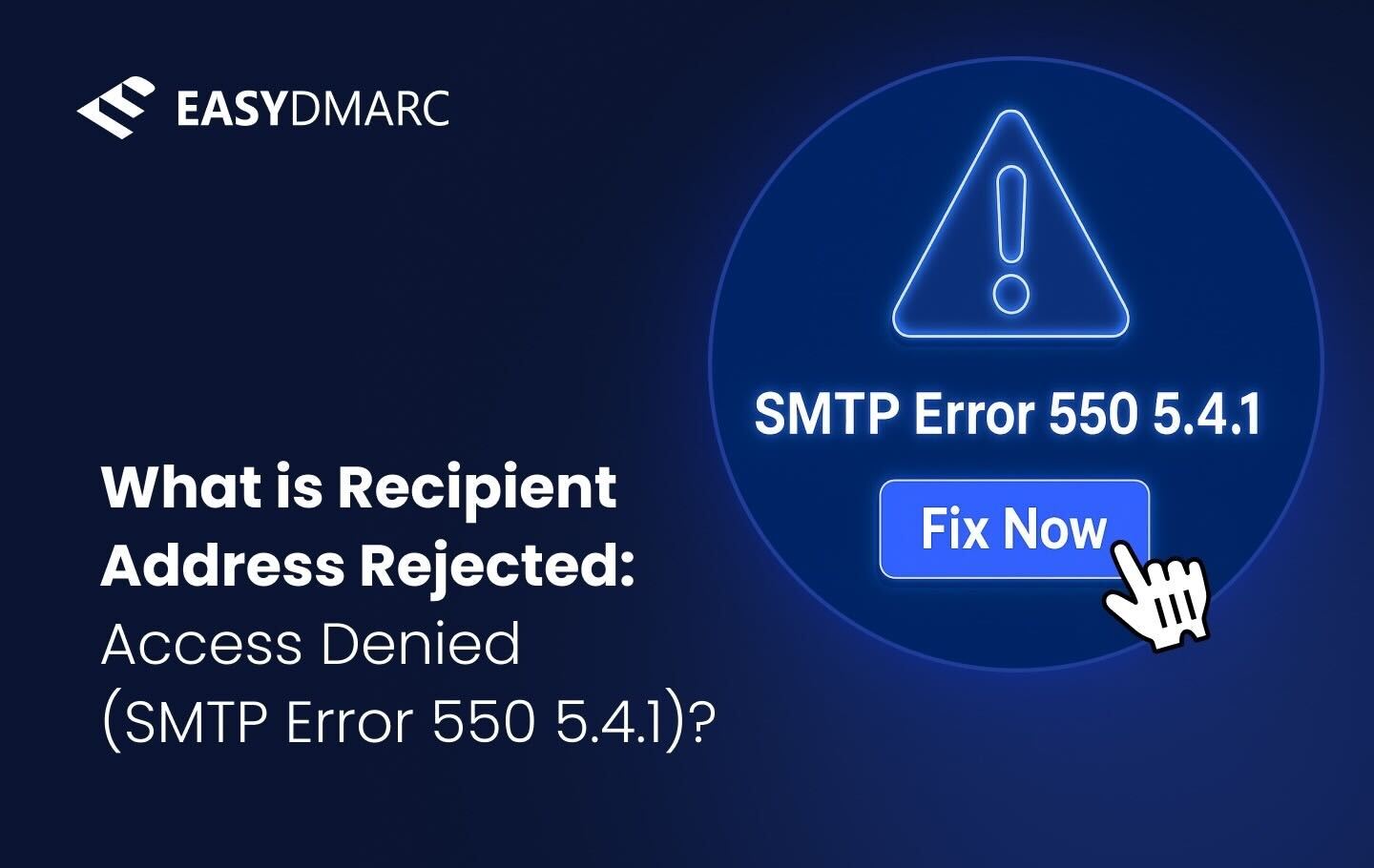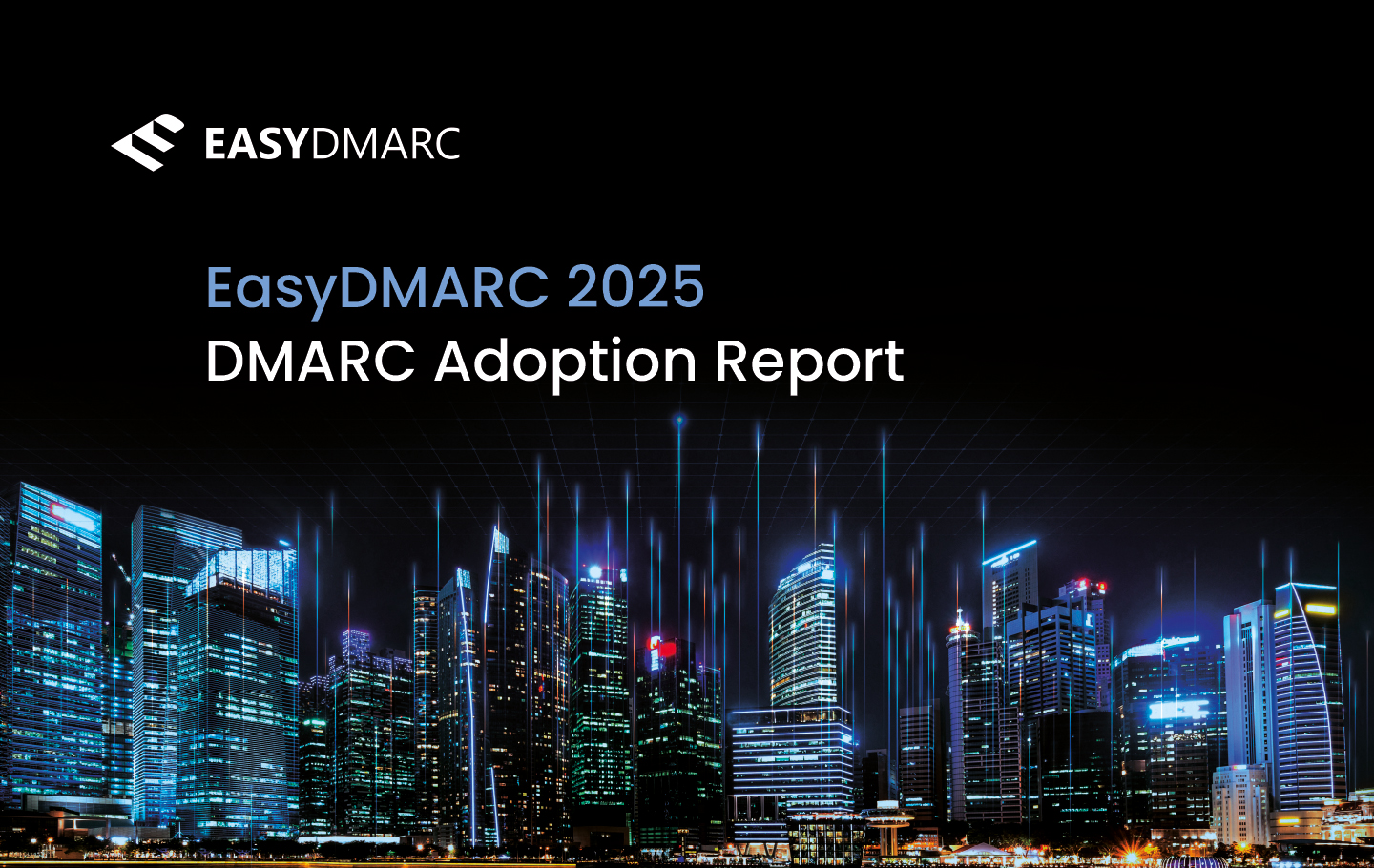If you’ve ever sent an email and quickly received a bounce message saying “recipient address rejected: access denied (550 5.4.1)”, you’re not alone. This is a fairly common error across email systems. In simple terms, it means the recipient’s server has refused to accept your message. Instead of going through, your email gets blocked at the delivery stage.
It can feel frustrating, but this error doesn’t always point to something permanent or unfixable. Most of the time, it’s a signal that either the address, the server settings, or security rules need to be checked before the email can be delivered successfully.
What Does “Recipient Address Rejected: Access Denied” Mean?
When this error appears, it can be confusing to interpret. Many people wonder what recipient address rejected access denied means, because the wording feels technical and unclear. At its core, it simply signals that the receiving server refused your email during the delivery process.
- 550 is a permanent failure code. It tells you the server did not deliver the email and won’t try again automatically.
- 5.4.1 points to a problem with the recipient’s address or the path your message took to get there. In other words, the receiving server refused to accept the email during the SMTP process.
So when you see “550 5.4.1 recipient address rejected access denied”, it means your email was blocked before it could reach the inbox. Sometimes this happens because the recipient address is invalid. Other times, the server refuses the message if it can’t confirm the sender’s identity through authentication checks like SPF, DKIM, and DMARC.
When these checks fail or aren’t set up correctly, the recipient’s system treats the message as suspicious and rejects it. Looking up your domain’s DMARC record with a lookup tool is one way to see how your domain is recognized by other servers and whether authentication misconfigurations might be behind the bounce.
Common Causes of This Error
The “recipient address rejected: access denied” message can show up for several different reasons. Some are simple to fix, while others involve checking your domain’s setup or server rules. Here are the most common causes:
Invalid or non-existent address
The email address might be misspelled or no longer active, so the recipient’s server rejects it right away.
Misconfigured MX Records
If your domain’s MX Records aren’t correct, mail servers may not know how to route your email, leading to delivery failures.
Server security policies
Some providers, like Microsoft, use rules such as Directory Based Edge Blocking to filter out mail sent to unknown or restricted addresses.
Authentication failures
Email systems rely on SPF, DKIM, and DMARC to confirm that a sender is legitimate. If these records are missing or misaligned, servers may deny the message.
Blocklisting or poor IP reputation
If your sending server’s IP has been flagged for spam or abuse, recipients’ servers may block messages. Monitoring your domain with an IP Reputation Check can show if this is the case.
Most of the time, the error points to one of these areas. Once you identify the underlying cause, you’ll know whether it’s a matter of fixing an address, updating records, or improving server reputation.
How to Fix “Recipient Address Rejected: Access Denied”
While the error can feel technical, fixing it often comes down to checking a few key areas. Here’s a step-by-step approach you can follow:
- Verify the recipient email address
The most basic but often overlooked step is checking if the address exists and is spelled correctly. If the recipient’s account was deleted, inactive, or typed wrong, the server will immediately reject your email.
- Check your DNS records
Email delivery depends on correct DNS settings. Missing or incorrect MX records (which tell other servers where to deliver mail) can cause messages to bounce. A DNS lookup can confirm whether your MX and related records are valid.
- Validate email authentication (SPF, DKIM, and DMARC)
Most modern mail servers require proof that your emails are genuine. If any of the following records are missing or misconfigured, your messages may be blocked by security filters.
- SPF (Sender Policy Framework): Confirms the server sending the email is allowed for your domain. Use an SPF Checker to see if your record includes all the right servers.
- DKIM (DomainKeys Identified Mail): Uses a cryptographic signature to prove the message wasn’t altered.
- DMARC (Domain-based Message Authentication, Reporting & Conformance): Decides how receiving servers should handle emails that fail SPF or DKIM. A DMARC Lookup will show if your record is published and aligned with your domain.
- Check your sending reputation
If your server’s IP or domain has been flagged for spam, other servers may reject your messages even if everything else looks correct. Running a Reputation Check can tell you if blocklisting is causing the bounce.
- Review security policies in Exchange or Office 365
Services like Microsoft 365 sometimes use Directory Based Edge Blocking, which prevents delivery to unknown or restricted addresses. If your emails are being filtered this way, your admin may need to adjust the policy to allow valid messages through.
By following these steps, you can identify whether the issue is as simple as a typo in the recipient’s address or as technical as a misaligned authentication record. Fixing the root cause not only resolves the bounce but also improves your long-term deliverability.
Preventing This Error in the Future
Once you’ve fixed the immediate issue, it’s a good idea to put checks in place so it doesn’t happen again. Here are some simple but effective practices:
- Audit your DNS records regularly: Make sure your MX, SPF, DKIM, and DMARC records are set up correctly and haven’t changed unexpectedly.
- Monitor your sending reputation: Keep an eye on whether your IP or domain is appearing on blocklists, since a poor reputation can lead to future rejections.
- Enable DMARC enforcement: Moving from “none” to a stricter policy (like “quarantine” or “reject”) helps protect your domain against spoofing and builds trust with receiving servers.
- Validate email lists before sending: Remove inactive or invalid addresses so you don’t trigger bounces that can hurt your reputation.
To stay on top of all these areas, you can use tools like a Domain Scanner, which gives you an overview of your domain’s health, showing if records are missing, outdated, or misconfigured, so you can address problems before they lead to errors.
How This Error Affects Email Deliverability and Reputation
Seeing the “recipient address rejected: access denied” error once or twice might not seem serious, but repeated bounces can quickly damage your domain’s reputation. Every time an email is rejected, it sends a negative signal to the receiving server. Over time, these signals add up and can hurt your:
- Sender score: Mail providers track how often your messages are delivered successfully. A high bounce rate lowers this score, making it harder for your emails to reach inboxes.
- IP and domain reputation: If servers frequently reject your messages, they may start to view your domain or sending IP as untrustworthy. This can even lead to blocklisting.
- Overall deliverability: Once reputation declines, even valid messages can get filtered into spam folders or blocked outright.
Authentication failures, such as a DMARC fail, play a big part in this. If your domain consistently fails these checks, receiving systems assume the mail is spoofed and block it. That’s why resolving errors helps protect your long-term deliverability and ensures your recipients continue to trust your messages.
When to Contact Your Email Admin or Provider
While many bounce errors can be fixed with simple checks, some issues go deeper and require access to tools or configurations that only your email administrator or provider can manage. You’ll want to reach out if you notice any of the following:
- Persistent bounces after troubleshooting: If you’ve already confirmed that the recipient address exists, checked your DNS records, and validated SPF, DKIM, and DMARC, yet the error continues, there may be hidden server-level restrictions that only an admin can see.
- Blocklisting concerns: When your sending IP or domain ends up on a public blocklist, your provider is usually the one who has to file a delisting request. They can also investigate why the listing happened, such as a sudden spike in outbound mail or compromised accounts.
- Advanced Microsoft Exchange or Office 365 configurations: Enterprise systems often include layered filtering, such as Directory Based Edge Blocking or transport rules. If your emails are being filtered before they reach the recipient’s inbox, an admin can review those policies and adjust them without compromising security.
- Authentication gaps: Sometimes your domain might not have DMARC fully enforced, which can lead to alignment failures and delivery issues. If you come across a case where your DMARC policy is not enabled, your admin can help publish and configure the right policy so your messages pass authentication checks consistently.
Contacting your admin or provider is often the best way to handle issues that are beyond your reach or control. They have access to mail server logs, security settings, and domain configurations that can reveal why your emails are being blocked, help prevent repeated rejections and protect your domain’s reputation.
Resolving the 550 5.4.1 Error
The “550 5.4.1 recipient address rejected: access denied” error is common across email systems, but it doesn’t mean your setup is beyond repair. Most cases can be traced back to simple checks. Start by confirming that the recipient address is valid and active, since typos or outdated accounts often trigger this response. If the address looks correct, move on to reviewing your DNS records. MX, SPF, DKIM, and DMARC all play a role in delivery, and even a small misconfiguration in one of these can cause a bounce.
Authentication is particularly important. Servers use SPF, DKIM, and DMARC to decide whether to trust your domain. If these records aren’t aligned, your messages may be treated as suspicious. Verifying them regularly helps maintain smooth delivery and prevents unnecessary blocks. At the same time, don’t overlook your server’s reputation. A poor IP or domain reputation can lead to widespread rejections, even if your technical setup is correct. Monitoring this area ensures you catch blocklisting issues before they escalate.
To make troubleshooting easier, EasyDMARC provides tools that support each part of the process. With these tools at hand, you can pinpoint the cause of the error and give your email program the best chance of reaching the inbox.
Frequently Asked Questions
The “550” code signals a permanent failure, which means the server won’t try delivering the message again on its own. That said, it doesn’t mean the issue can’t be resolved. Many times, the error disappears once DNS or authentication problems are fixed. In cases where the bounce mentions permanent error evaluating DMARC policy, it’s a clear sign that your DMARC setup needs attention.
Although both are SMTP error codes, they point to different problems. 5.4.1 is typically about routing, usually the recipient’s server couldn’t find or accept the address you tried to reach. 5.7.1, on the other hand, points to restrictions or security rules, like when a message fails SPF, DKIM, or DMARC checks, or when it’s blocked by the recipient’s policies.
If a message fails SPF or DKIM, it will also fail DMARC, which receiving servers use to decide whether to accept or reject mail. A lookup tool can help you confirm whether your domain’s DMARC record is published and aligned, so your emails stand a better chance of passing authentication.


